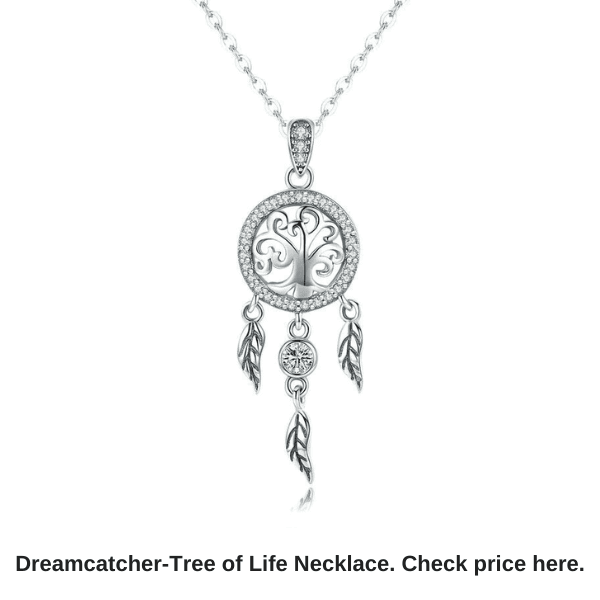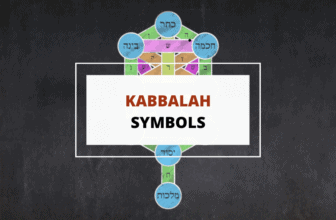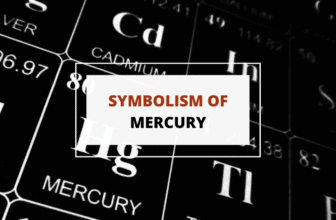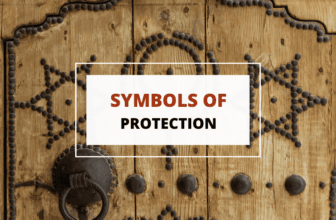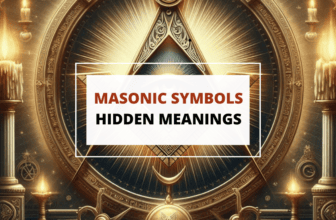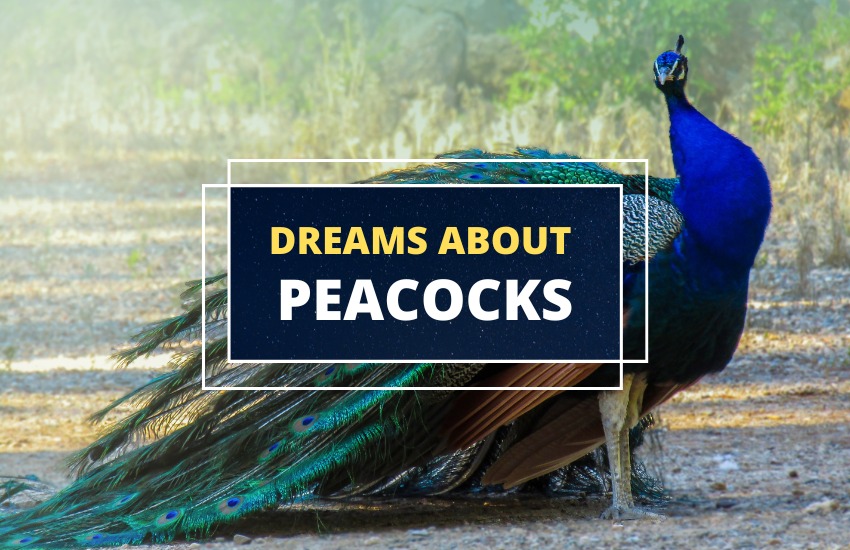
Table of Contents
Is there anything more colorful in nature than a peacock’s tail? This beautiful fan spread by the bird is the upper tail and only males can boast such beautiful and bright feathers. The richer the tail, the more attractive the peacock.
Throughout time and across various cultures, peacocks have been considered a symbol of strength and royalty. Peacocks flaunt their beauty and their ability to move gracefully, which makes them proud creatures and people see them as majestic creatures.
Here, we will talk about the various symbols derived from the peacock and how effective these symbols are at representing these ideas. So, if you’re interested in reading more about the peacock, stick with us.
Peacocks – A Brief Overview of the Species
The peacock is a relative of common domestic chickens and belongs to the pheasant family. However, they are much larger than their relatives.
On average, the weight of an adult peacock can reach 5 kg, and the length of the body can reach more than one meter.
Peacocks have the ability to fly, but because of the weight of their tail, their flight patterns are brief and only reserved for emergencies.
The upper tail might be blue or green depending on the kind of bird. While some have gold or white glitter.
Each feather has a brilliant eye in the middle. The “fan” opens to a maximum width of 300 cm thanks to the big, thick feathers, which can grow to a length of 160 cm.
Many Asian countries hold peacocks in high esteem as special, almost royal birds.
For example, In India, they consider peacocks sacred birds and they have the status of being the national bird in India. Many proverbs and stories are dedicated to them, symbolizing eternal joy, happiness, and purity.
Peacock Feathers and Their Fascinating Interpretations
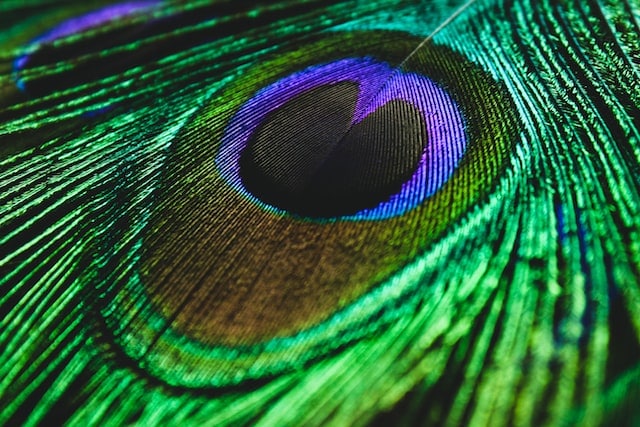
Everywhere people look, they value peacock feathers, especially in the East, and in this sense, their symbolism and general admiration find their way to the West.
Here, they abundantly use peacock feathers as a tattoo symbol, as a talisman, and also in home decorations, all because they believe that this feather brings good luck.
Peacocks live for about 20 years and male peacocks fully develop their beautiful feathers when they are 5-6 years old. At the age of one and a half years, they are just as plain and simple as females.
The length of the tail can reach 1.5-2 meters. Which exceeds the length of the body by two, or even three times.
Bright feathers are one of the main ways to attract the other sex. And the brighter and more beautiful the tail, the more chances the male has of impressing a female.
Some male peacocks can often acquire an entire harem of female peacocks, or “peahens” as they are aptly named.
Peacocks also use their tails to scare enemies. Seeing a huge tail with many “eyes” that appeared out of nowhere, the predators tend to retreat.
The peacock’s tail is also used for mutual communication. It transmits infrasound waves that an ordinary person cannot hear.
On rare occasions, you might be able to notice the feathers vibrating, like a gentle ripple in the water. All these factors make the peacock’s tail not just an awe-inspiring beautiful object, but also a highly useful one for the bird.
Symbolism of the Peacock
So, let’s talk about some of the most common interpretations of the peacock:
1. National Pride
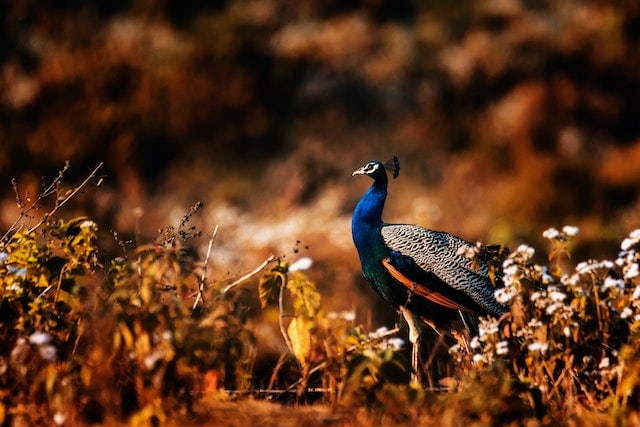
The image of a peacock, as a symbol of pride, took its rightful place on the coat of arms of the city of Serpukhov, located in the Moscow region.
This drawing appeared back in 1720 and was inspired by the breeding of these magnificent birds in one of the local monasteries.
This coat of arms has undergone several color variations over the years, but the peacock has remained the same.
Apart from Russia, People highly value the peacock in Asian cultures like India and Sri Lanka, where it is the national bird.
2. Immortality
Ancient Christians considered the peacock to be a symbol of immortality, rebirth, and regeneration. They believe that the meat of a peacock doesn’t go bad, even after three days of sitting at room temperature.
In Eastern countries, people see the peacock as a symbol of pride and strength. According to Muslim tradition, they believe that the “eyes” on the peacock’s tail represent the cosmos.
In past centuries, a fan of peacock feathers in a woman’s hand indicated the person belonged to the upper class and many knights also adorned their helmets with peacock feathers.
3. The Changing of the Seasons
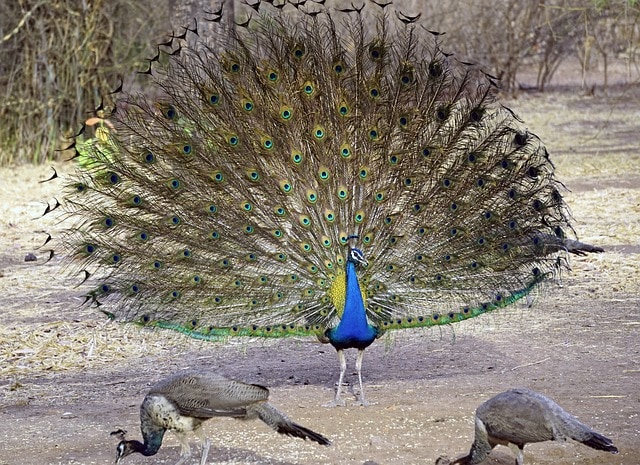
Peacocks can predict natural disasters such as hurricanes or earthquakes. As severe weather approaches, the birds become restless.
According to several Indian traditions, it is also believed that peacocks, with their elegant dances and rituals, help precipitate the Earth.
As such, if you spot a peacock dancing, and trying to attract a female, it means that the monsoon season is about to begin.
4. Love and Consent
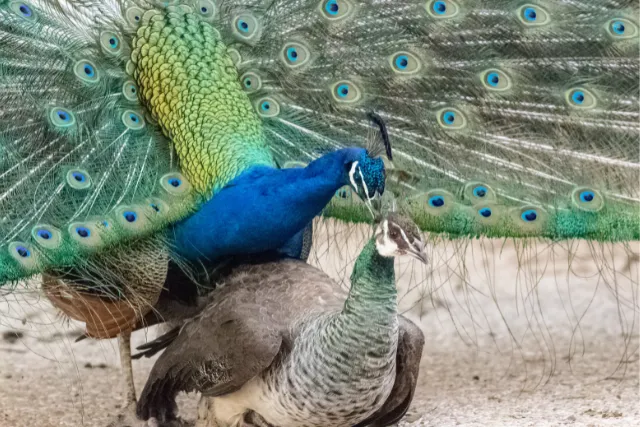
After the female gives her consent to the union, the peacock turns his back on her. Mating season starts with male peacocks displaying their beauty to attract females to start their life together.
The peacock opens its “fan” and begins to dance around the chosen one, rustling glitter and freezing in spectacular poses.
Other than boasting spectacular colors, peacocks use their feathers to scare off predators during the mating season.
Having decided on a companion, the male wants her to be in the best conditions. To achieve this, he often has to compete with other peacocks.
Peacock drama is typically ended by flaunting one’s magnificent tail until the adversary flees. The peacock uses its stunning shine to ward off predators as they approach the nest, where the female has laid her eggs.
The peacock feather, which is portrayed as an embellishment in the crown of the god Krishna, is a representation of divine love and selflessness and is greatly prized in India.
5. Beauty
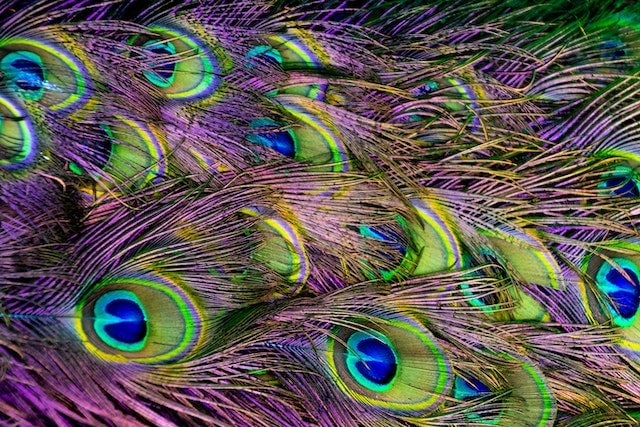
The peacock is seen as a bird of wisdom, immortality, pride, and beauty.
In the Hindu religion, the peacock is considered a sacred royal bird, and the peacock’s tail is identified as a universal symbol of beauty.
6. Luck
It is believed that peacock feathers provide protection against negative energy, and attract luck, joy, and success in a career.
If it is placed as an amulet in the northern or southern section of your house. It will bring respect and prosperity.
Apart from feng shui, peacock feathers serve as a talisman for material prosperity. The peacock’s tail has seven distinct colors, but many experts believe that there are about 365 colors in it.
According to esoteric beliefs, a peacock feather will only bring happiness and wealth to the family if it is located close to the house.
A period of happiness and joy is said to be in store for a person if they were to happen upon a peacock feather on the street.
Many people use a peacock feather as a charm to draw love and provide protection from danger, evil, and betrayal.
7. Glory and Grace
The peacock is connected with glory and victory because of its distinctive colors and strutting movements.
It symbolizes astral objects like the moon, sun, and stars as well as the manifestation of a luminous spirit in many civilizations.
The peacock is revered for its grace and serves as a kind of reminder for us to act honorably at all times.
8. Harmony
The image of a peacock in the home is also considered a talisman of protection and harmony.
9. Bad Luck
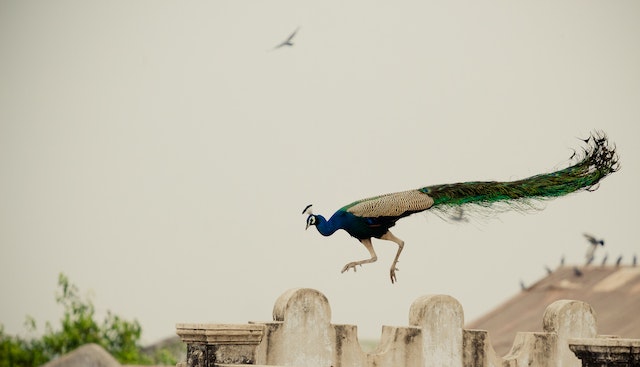
In some countries, peacock feathers are associated with spells, bad luck, and evil spirits. One of the superstitions in England indicates that a family with a peacock feather in their home will face many troubles.
In dreams, a peacock feather indicates caution from other people. foreshadowing people foreshadowing that the person having dreams could be in grave danger., as the dreamer because of which we may be in danger.
Since peacock feathers have black color in them, they can act like predators, signifying transformation, negative energy, and a sense of danger.
10. Vanity
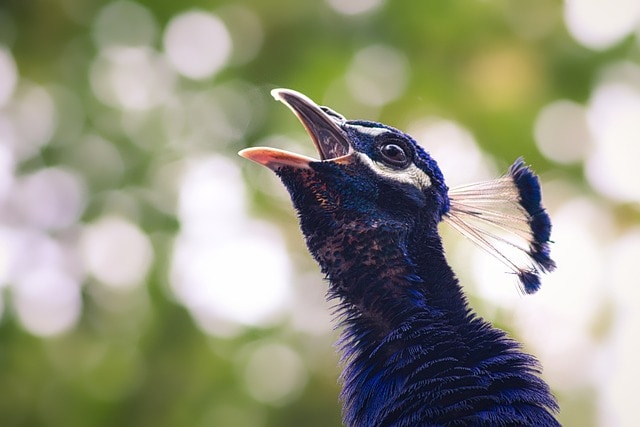
Although we’ve come across many positive connotations for the peacock, people can also use its pride to insult others.
In some countries, people would refer to a narcissistic or arrogant person as a peacock. Also, the term “peacocking” is used to mention a person, usually a male, who takes too much pride in their appearance. They desperately try to stand out from the rest of the males with their sense of fashion and material wealth.
11. Transformation and Victory
Of course, in some cultures, peacock feathers are a this is a good sign. You can use them as a protective weapon that can help you maintain happiness in your life.
This feather symbolizes one’s victory over toxic tendencies that are all around us, and this magical story can help us fight them.
Peacock feathers are also considered to be able to purify poison.
As such, they are poison purifiers, and in that sense, their feathers are constantly uncontaminated. People use them in many sacred rituals of different traditions throughout the world, especially in the East.
Many say it is a symbol of transformation and can turn darkness into beautiful splendor, just as a peacock displays its beautiful feathers.
The Meaning Behind the Colors of the Peacock’s Feathers
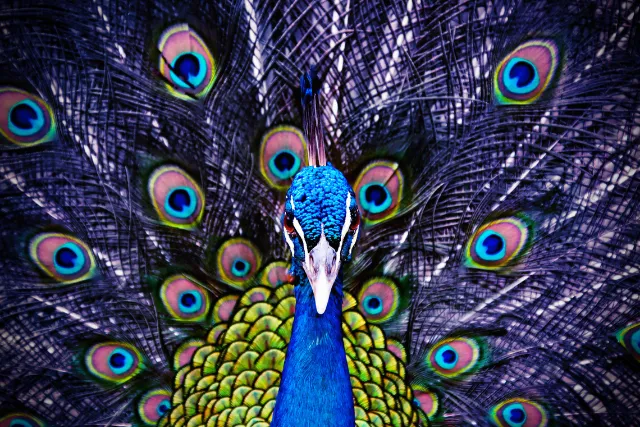
All the distinct features of a peacock feather have meanings associated with them.
If someone comes across a larger, elongated white feather, it indicates that the person will have to make a family or career decision in the next few days. The presence of a little white feather, however, is frequently a sign of good things to come.
According to a slightly different interpretation, people believe that black feathers indicate the existence of certain unfavorable forces in life. Also, people believe that if an unmarried woman finds two peacock feathers, she will get married that year.
If we delve further into the symbolism of peacock feathers, we find that they can actually offer strong spiritual and even magical protection from negative energy.
The belief that these colorful objects may draw luck, happiness, and professional success is another reason individuals like to keep a feather or two in their houses.
Interpretations of Peacocks in Dreams
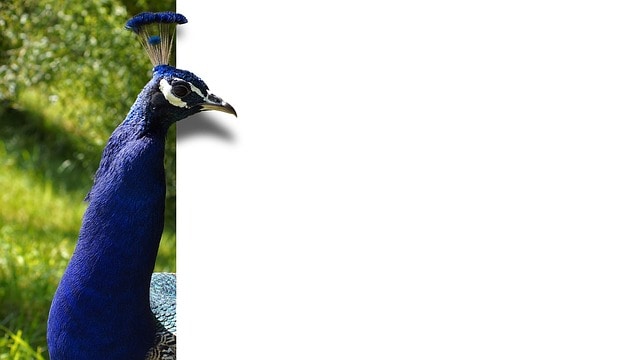
Sometimes peacocks, together with their beautiful feathers, appear in the world of dreams, and even here they have an important and interesting purpose.
The peacocks play a role as a warning, but they also have an association with happiness and prosperity that will arrive very soon in the dreamer’s life.
Depending on what happens during the dream, it can warn you that you should not trust everyone around you and that you should think carefully about all future steps.
In dreams, a peacock feather indicates the caution of other people who can put us in danger. While a dream of catching a peacock is an announcement of an imminent marriage. It can come as an incredible warning that could help us prevent some negative events that will happen soon.
Wrapping Up
In the world of symbolic language, almost all animals have something to say, so in this sense,. It is always an interesting task to look into their world and see what they symbolize.
What is most interesting here is the fact that the peacock is one of the most beautiful creatures in the world, and it certainly carries an incredible symbolic value.
Of course, the feathers are the most valued part of this bird, and in that sense, the most magical.
We hope you enjoyed reading about peacocks and learned something new so that you can deeply appreciate this majestic animal.
Similar Articles:



